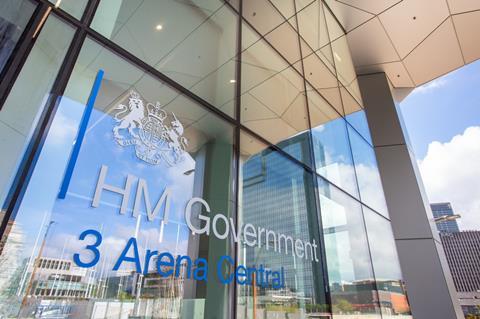This is a long-term and credible plan to create a smaller, better and greener public estate, says ISG’s Zoe Price
For keen built environment historians, or indeed sector veterans, there is an ever-present sense that the clear benefits from smart and transformative industry reviews and initiatives perennially fail to fully materialise and drive promised change. Whether through inaction, indifference or changing government priorities, those ideas that open the door to profound change and advancement – generally with universal industry approval – have a short shelf-life and further crystalise the perception of a sector that cannot modernise.
Given this history, and with mild trepidation, I am going to call time on this cycle of frustration and missed opportunity. And the reason for this prediction is simply that the individuals that are driving the government’s property programme are as impatient for change as we are.

The government property strategy discussion I recently chaired was a revelation. Not because everyone agreed that things need to change, and that greater public-private collaboration would be crucial to this success – mostly conference attendees are all on the same page, right? It was actually who was making these remarks: Mark Chivers, director general for government property at the Cabinet Office, Steven Boyd, chief executive of the Government Property Agency and Mike Green, chief executive of Defence Infrastructure Organisation.
>>See more: The Building the Future Commission
There was absolute unity of voice and real honesty in the debate about the challenges the public sector faces around estate optimisation, and how it cannot solve these issues alone. The government property strategy, written in August 2022, sets out the ambition to transform places and services; to create a smaller, better and greener public estate; and to improve professional excellence and insight, across an estate encompassing 136,844 built assets and valued at £157.6bn. Add in local authority portfolios and that value rises to half a trillion pounds.
It is an eight-year strategy, which means 5% of the programme has already disappeared – a fact not lost on the panel. But that timeframe also enables opportunity. Annualisation of budgets and spending review periods do not sit well with long-term capital plans; an eight-year landing zone provides the space and time to facilitate change and innovation through effective partner collaboration.
As far as one can future gaze – a commitment to realise a further £2bn of property savings from the public estate seems unlikely to be immediately jettisoned with any potential change in political leadership that may be coming in 2024/25.
World class public facilities that support our communities can be efficiently procured, delivered and maintained
The strategy outlines clear leadership for sector asset classes – for example, schools, hospitals, defence – so they are managed strategically and there is avoidance of reinvention every time. In a show of how far things are transforming, customer experience is now a core property objective – customers of course being the civil servants, nurses, teachers, soldiers using our public assets.
Recently HMRC’s new office in Birmingham secured a Leesman “plus score” for what it calls “purposeful presence” – a workspace experience measure that ranks it in the top 2% worldwide.

This is an unapologetic demonstration that world-class public facilities that support our communities can be efficiently procured, delivered and maintained in a cohesive and smart manner, underpinned by data insights and a step change in thinking. These leaders recognise that long-term partners deliver better, and there is a frank acknowledgement that the idea someone is going to come along and take all the risk has largely gone.
There is a frank acknowledgement that the idea someone is going to come along and take all the risk is largely gone
The phrase “skin in the game” was a consistent factor in the discussion – the responsibility the public sector adopts as a client has changed and enabling innovation helps suppliers be better and compete at the highest levels. Helping suppliers succeed is indeed the collaborative partnership where everyone wins.
There is also an equal responsibility from the construction industry to step up and demonstrate that it has the skills, expertise and innovative mindset to help drive this radical programme of property reform. The success of new procurement methodologies, for instance alliancing, is certainly within our gift. But, collectively, we can be bolder and more creative in showcasing the impact of technology, collaborations and shared learnings, upskilling supply chains and demanding more from ourselves.
So for these reasons, I am marking this as a new dawn in our relationship with our sector’s largest client. The Construction Playbook, the Gold Standard and the government property strategy provide the template and framework for a changed relationship. These are indeed radical times for our industry, so that I why I am prepared to call it – this time it will be different!
Zoe Price is chief operating officer at ISG
Building the Future Commission
The Building the Future Commission launched in Building’s 180th anniversary year to assess potential solutions and radical new ways of thinking to improve the built environment.
It is being guided by a panel of 19 experts who have signed up to help shape the commission’s work, this will culminate in a report setting out recommendations for industry and government.
The project is looking at proposals for change in eight areas:
- Education and skills
- Housing and planning
- Infrastructure
- Building safety
- Project delivery and digital
- Workplace culture and leadership
- Creating communities
>> Editor’s view: And now for something completely positive - our Building the Future Commission
>> Click here for more about the project and the commissioners
We want to hear your ideas and views, please email buildingfuturecommission@building.co.uk to get in touch.





























No comments yet